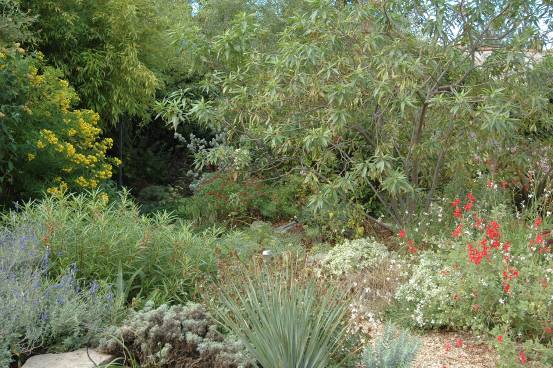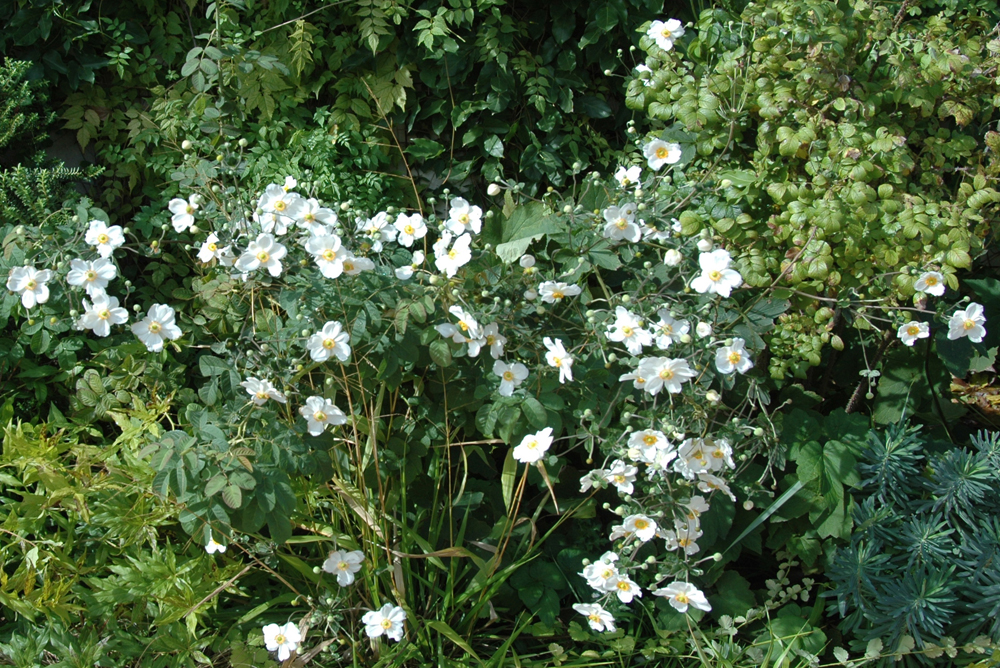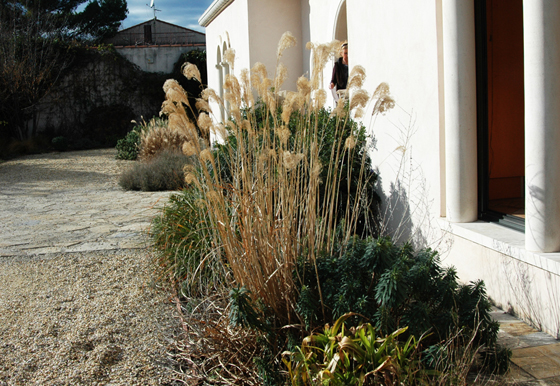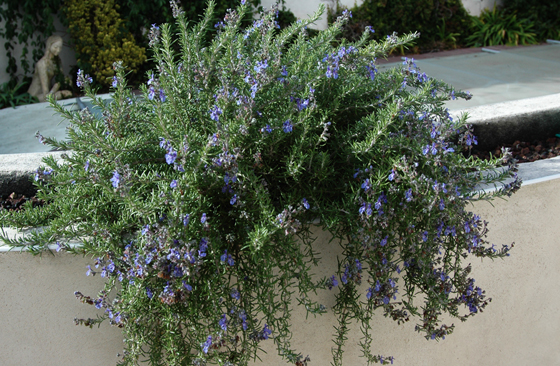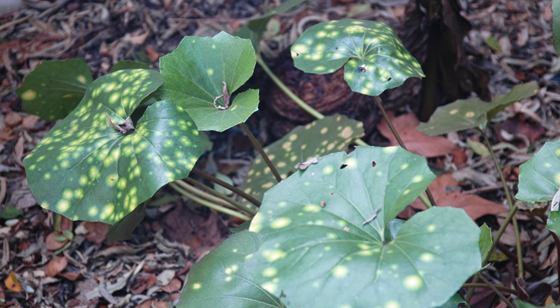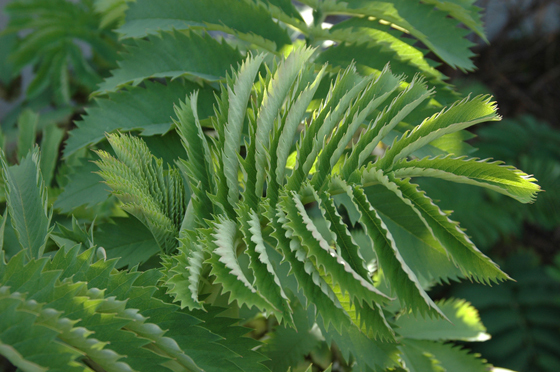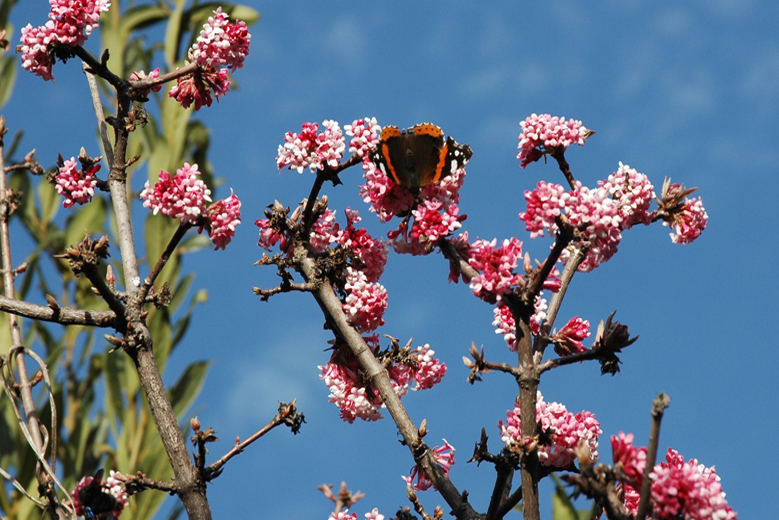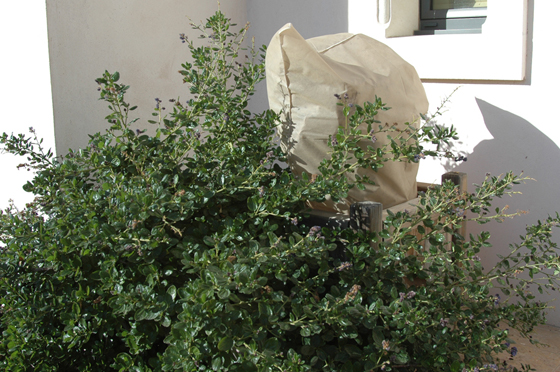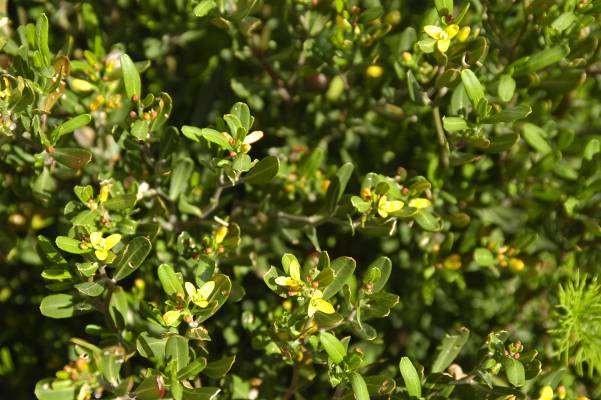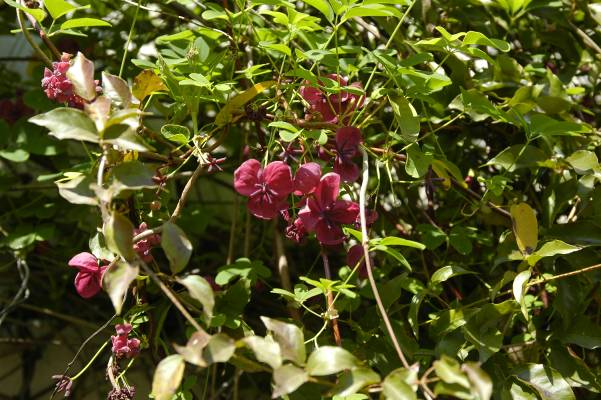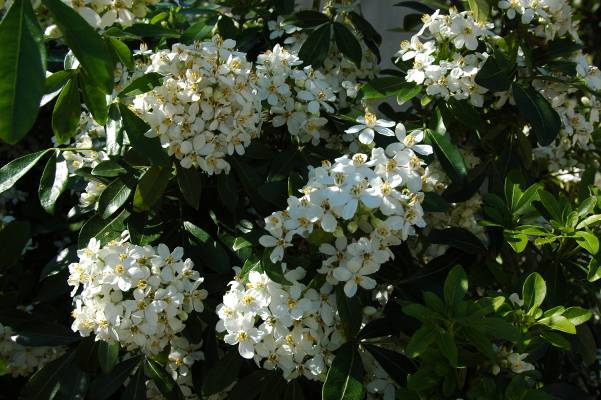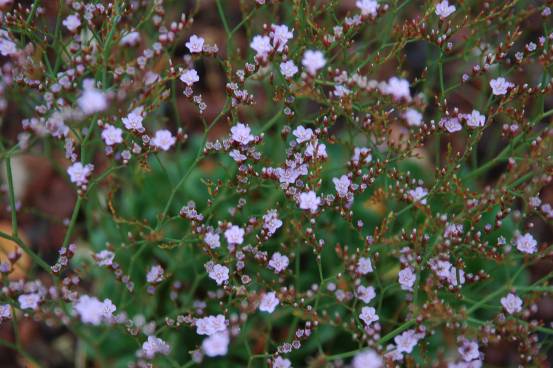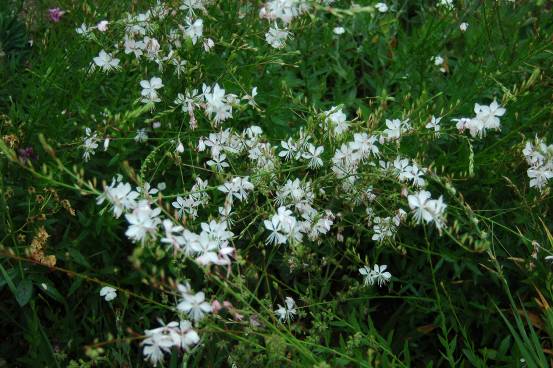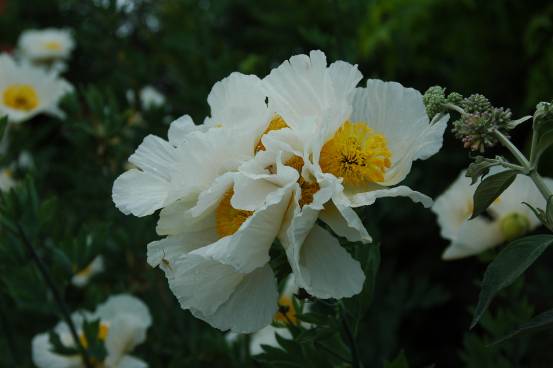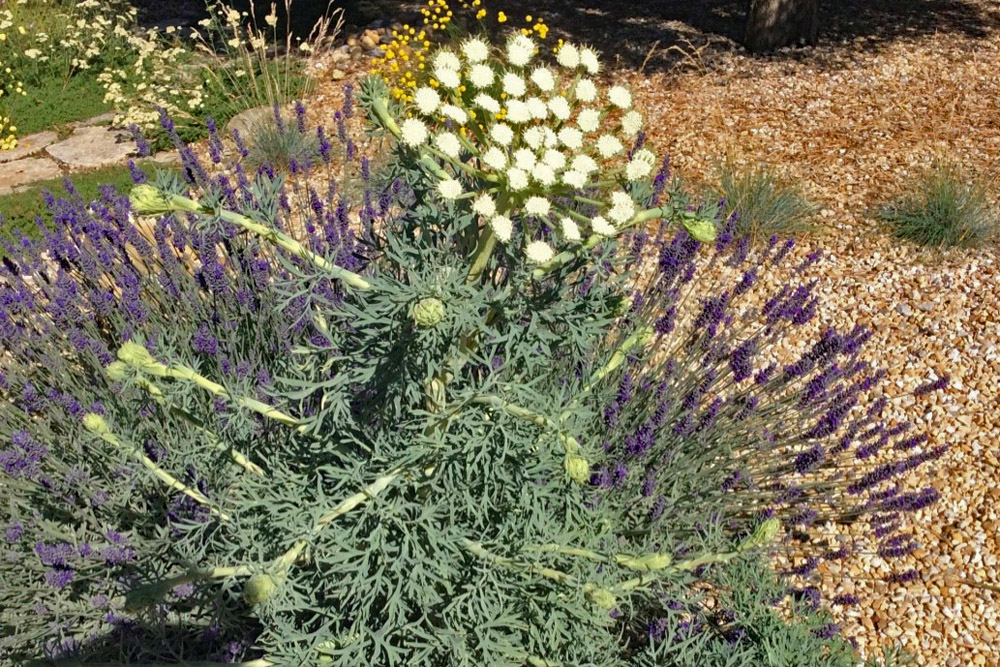Garden Diaries / Journaux de jardins
A City Garden in Montpellier / Un jardin de ville à Montpellier

Having enjoyed compiling the diary of Olivier & Clara Filippi’s garden on the coast at Mèze, Duncan and Catriona decided to follow up by choosing a very different garden for another series of articles. They selected Chantal and André Guiraud’s city garden in Montpellier and will make visits at different times of the year to record what they see in words and pictures.
Ayant pris beaucoup de plaisir à tenir le journal du jardin d’Olivier et Clara Filippi situé sur la côte, à Mèze, Duncan et Catriona ont décidé de consacrer une autre série d’articles à un jardin très différent. Ils ont choisi pour cela le jardin de ville de Chantal et André Guiraud à Montpellier, qu’ils visiteront à diverses périodes au cours de l’année pour rendre compte de ce qu’il y ont vu en mots et en images.
Click on the images to enlarge them / Cliquez sur les images pour les agrandir
‘A September to remember. An October full of splendour….’
« Un mois de septembre mémorable, un mois d’octobre resplendissant…. »
La Prevenchere
Chantal and André’s garden was created in 2004 on poorly draining, alkaline soil which becomes dry and compacted in summer and retains water during the winter. The minimum temperature was recorded as -6˚C in 2010 and -10˚C in 2012. The principal aims when planning the garden were to screen the property from overlooking buildings and to minimise noise and air pollution from the surrounding city.
Le jardin de Chantal et André a été créé en 2004 sur un sol calcaire pas assez drainé qui devient sec et compact l’été et retient l’eau l’hiver. La température minimale enregistrée a été -6˚C en 2010 et -10˚C en 2012. La planification du jardin a eu pour principaux objectifs de construire un écran entre le jardin et les bâtiments qui le surplombent et d’atténuer le bruit et la pollution de l’air provenant de la ville qui l’entoure.
Garden Layout & Irrigation Policy
Conception du jardin et régime d’irrigation
To help navigate around the garden we have included a plan showing the main planting areas. The north facing borders receive no water and the dry beds in front of the house have not been irrigated since summer 2008. The east facing border receives water during the summer months and some plants in the Mediterranean zone are watered once a week if necessary. The courtyard garden is irrigated.
Pour faciliter le déplacement dans le jardin, nous avons inclus un plan qui indique les principales zones de plantation. Les plates-bandes orientées au nord ne sont pas arrosées et les zones sèches situées devant la maison n’ont pas été irriguées depuis l’été 2008. Celle orientée à l’est est arrosée pendant les mois d’été et quelques plantes dans la zone méditerranéenne sont arrosées une fois par semaine si cela est nécessaire. Le jardin dans la cour est arrosé.
Members have expressed interest in incorporating late summer flower colour when planning their gardens and an excellent list of suitable plants, compiled by Gill Pound, was attached to the Languedoc September Newsletter. We now have the opportunity to add to that research with photographs taken in Chantal’s garden at the very end of September. Many of the plants featured will be flowering into October, hence the quotation used for title of this article, (it continues: “A November to treasure”).
Les membres se sont déclarés intéressés par l’inclusion, lors de la planification de leurs jardins, de fleurs colorées qui apparaissent en fin d’été et une excellente liste de plantes appropriées, établie par Gill Pound, a été jointe au bulletin de septembre du Languedoc. Nous avons ici l’occasion de compléter ce travail par des photographies prises dans le jardin de Chantal dans les derniers jours de septembre. La floraison de bon nombre des plantes qui y figurent se prolongera jusqu’en octobre, d’où la citation utilisée en exergue du présent article (qui continue ainsi : « Un mois de novembre à chérir »).
Dry Garden / Le jardin sec
These beds are along the front of the house, on each side of the main door, facing south.
Ces plates-bandes sont situées en bordure de la façade de la maison, de part et d’autre de la porte principale, face au sud.

Combines an arching architectural form with attractive variegated leaves. Shown here with flower-heads which should last well into winter.
Cette plante allie une forme architecturale arrondie et un joli feuillage panaché. On la voit ici avec des inflorescences qui devraient durer jusqu’en plein hiver.

Flowers from April to June and again in September. The bright yellow flowers are followed by small red fruits which eventually turn black. An undemanding plant.
Floraison d’avril à juin, puis de nouveau en septembre. Les fleurs d’un jaune brillant sont suivies de petits fruits rouges qui tournent ensuite au noir. Plante peu exigeante.

Has flowered since April and looks certain to continue for several weeks. Deadhead to encourage flowering.
En fleur depuis le mois d’avril, cette sauge continuera à n’en pas douter de fleurir pendant encore plusieurs semaines. Couper les fleurs fanées pour encourager la floraison.
East Facing Border / La plate-bande orientée à l’est
This area of the garden was planted in 2006 and is watered during the summer as needed.
Cette zone du jardin a été plantée en 2006 et elle est arrosée pendant l’été si nécessaire.

The attractive pink flowers appear in August. The plant can be slow to establish but once started spreads rapidly if its roots remain undisturbed. Increase by division in early spring. Tolerates partial shade.
Les jolies fleurs roses apparaissent en août. La plante peut être lente à s’établir, mais une fois installée, elle se propage rapidement si on ne touche pas à ses racines. Peut être multipliée par division au début du printemps. Supporte la mi-ombre
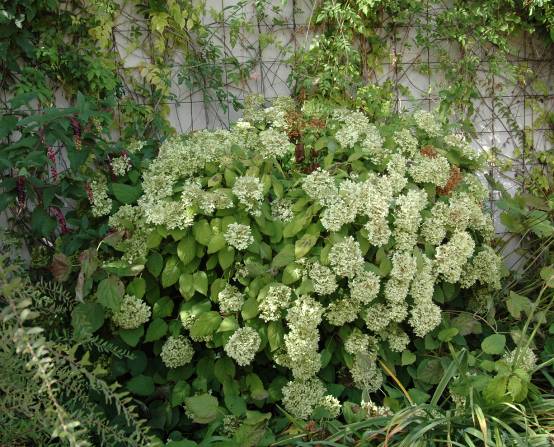
This hydrangea can grow to 2.5m width and height. It tolerates alkaline soil and benefits from morning sun. Flowers from June.
Cet hortensia peut atteindre 2,5 mètres en largeur et en hauteur. Il tolère un sol calcaire et aime le soleil matinal. La floraison commence en juin.
Mediterranean Garden / Le jardin méditerranéen
In the northern part of the Mediterranean area, two deciduous shrubs have been chosen so that there will be a view across the garden during the winter months. We will take this photograph again when the trees have shed their leaves to show the difference.
Dans la partie nord du jardin méditerranéen, deux arbustes à feuillage caduc ont été choisis pour offrir une vue à travers le jardin pendant les mois d’hiver. Nous reprendrons une photographie lorsque les arbres auront perdu leurs feuilles afin de montrer la différence.
Chilopsis linearis – shown on the left of the photograph, flowered from June to September. The flowers are pink and trumpet shaped and the shrub can be pruned to maintain a good shape. Chitalpa tashkentensis – shown to the right, also flowered until mid September, is derived from Chilopsis linearis and Catalpa bignonoides and shares the larger flowers of the latter. Both tolerate dry conditions but may benefit from some water during sustained drought.
Chilopsis linearis – situé sur la gauche de la photographie, en fleur de juin à septembre. Les fleurs sont roses, en forme de trompette, et les arbustes peuvent être taillés pour garder une jolie forme. Chitalpa tashkentensis – à droite, également en fleur jusqu’à la mi-septembre, est un hybride entre Chilopsis linearis et Catalpa bignonoides, dont il a les fleurs. Les deux tolèrent le manque d’eau, mais pourraient apprécier un peu d’arrosage en période de sécheresse prolongée.

Cream flowers appear briefly in June but the main attraction is the arresting dark foliage. Height to 6m. Also shown, the red flowers of Salvia darcyi and white Gaura lindheimeri.
Des fleurs couleur crème apparaissent brièvement en juin, mais son principal attrait tient à son somptueux feuillage foncé. Hauteur : 6 mètres. On voit aussi les fleurs rouges de Salvia darcyi et les fleurs blanches de Gaura lindheimeri.

En partant de la gauche : Ceratostigma willmottianum, le rose de Tulbaghia leucantha, qui en est maintenant à son cinquième mois de floraison et, au centre, les hampes florales bleues de Salvia chamaedryoides ‘Argentea’, qui fleurit depuis le début du mois de mai.
Towards the back of the Mediterranean beds is a large plantation of bamboo. Two of the varieties shown in this photograph are Phyllostachys bambusoides with a green stripe and Phyllostachys nigra which can grow to 10 metres.
Vers le fond des plates-bandes méditerranéennes, on aperçoit une large étendue de bambous. Les deux variétés apparaissant sur cette photographie sont Phyllostachys bambusoides, à rayure verte, et Phyllostachys nigra, qui peut atteindre une hauteur de 10 mètres.
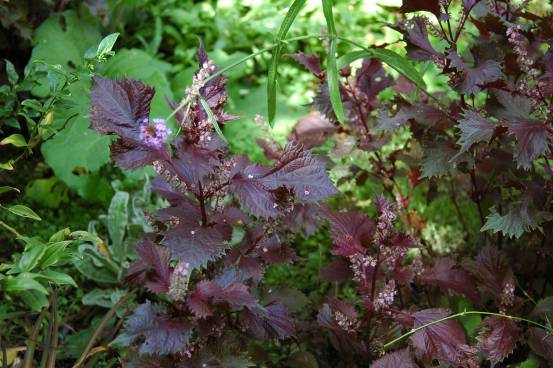
Grows rapidly and self seeds. The leaves can be used to flavour sushi or oriental salads and the flower heads fried in tempura batter!
Plante à croissance rapide et qui se ressème. Les feuilles peuvent être utilisées pour assaisonner des sushis ou des salades orientales, et les inflorescences peuvent être frites dans une pâte à tempura !
North Facing Border / Plate-bande orientée au nord
The planting in this part of the garden echoes the theme of ‘structure, form and texture’ that we observed in Olivier Filippi’s garden.
La plantation de cette partie du jardin reprend le thème « structure, forme et texture » que nous avions observé dans le jardin d’Olivier Filippi.
From left to right, in the foreground, are Mirabilis jalapa, still in flower, Ballota pseudodictamnus and Geranium sanguineum. Phlomis fruticosa sits neatly surrounded by the three cypress trees then comes Spiraea cantoniensis ‘Flore Pleno’.
De gauche à droite, on voit au premier plan Mirabilis jalapa, encore en fleur, Ballota pseudodictamnus et Geranium sanguineum. Phlomis fruticosa est joliment entouré des trois cyprès, puis vient Spiraea cantoniensis ‘Flore Pleno’.
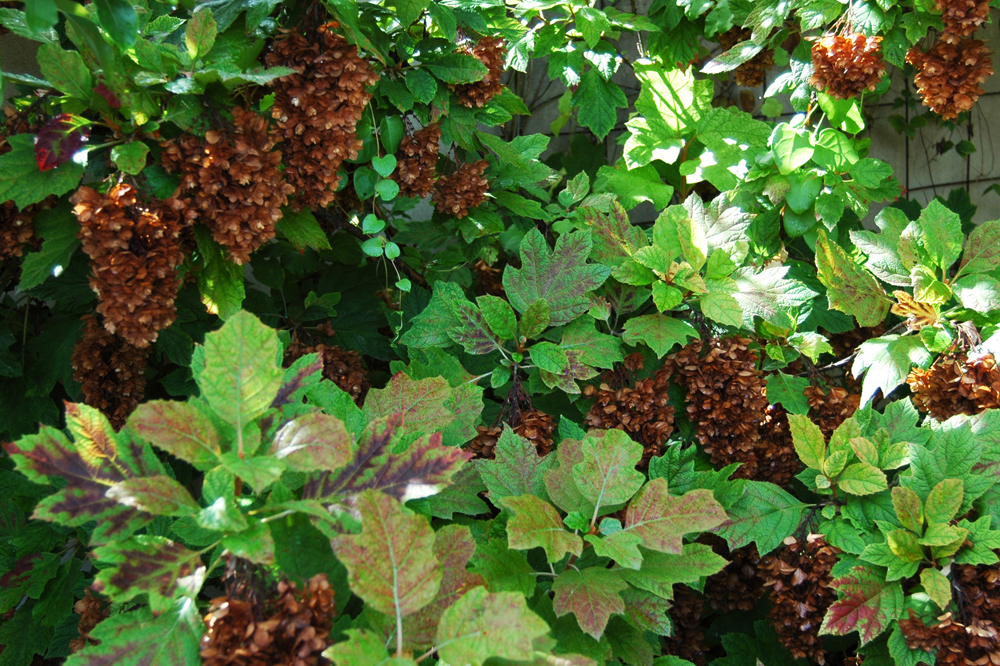
With its characteristic “oak shaped” leaves, this shrub began flowering on 1st June this year. Although the white flowers gradually turn brown, the flower heads remain attractive. Grows to about 2 metres.
Avec ses feuilles ressemblant à des «feuilles de chêne » caractéristiques, cet arbuste a commencé à fleurir le 1er juin cette année. Même si les fleurs blanches tournent peu à peu au brun, les têtes florales restent décoratives. Atteint environ 2 mètres.

C. ternata has flowered on three occasions this year – throughout January, then in April and again in September! Bees find the flowers very attractive.
C. ternata a fleuri à trois reprises cette année – pendant tout le mois de janvier, puis en avril et à nouveau en septembre! Les abeilles sont très attirées par les fleurs.
Le potager
Finally, a photograph to demonstrate to anyone with doubts, that a potager can be attractive and decorative!
Enfin, une photographie pour démontrer à quiconque qui pourrait avoir des doutes qu’un potager peut être attrayant et décoratif!
We will repeat our visit to all of these areas in future articles and introduce other sections of the garden not covered this time.
Nous renouvellerons nos visites à toutes ces zones dans nos prochains articles et nous vous ferons découvrir d’autres sections du jardin dont nous n’avons pas traité cette fois.
Texte de Duncan Munford
Photographies de Catriona McLean
Traduction en français de Françoise Darlington
Structure, Colour and Texture – in Winter!
We carried out our January visit to Chantal’s garden on the last day of the month with the thermometer recording 18˚C. Our report includes some great examples of Mediterranean plants which provide plenty of winter interest and led us to virtually repeat the title we used for the report on Olivier Filippi’s garden in August 2011.
The photograph above shows a similar view of the garden to that taken in September 2012. Notice how the bare branches of the deciduous Chitalpa tashkentensis now allow the eye to travel through to the background planting whilst providing interest from the tree’s own skeletal structure.
Nous avons effectué notre visite chez Chantal le dernier jour du mois de janvier sous une température record de 18°C! Notre reportage présente quelques beaux exemples de plantes méditerranéennes à intérêt hivernal et qui illustrent parfaitement le titre utilisé pour notre reportage sur le jardin d’Olivier Filippi en août 2011.
La photo ci-dessus montre une vue du jardin identique à celle prise en septembre 2012. Remarquez comme les branches nues du Chitalpa tashkentensis laissent maintenant passer le regard au travers de la structure squelettique de l’arbre jusqu’à l’arrière plan.
The Dry Garden / Le jardin sec
Following the same route through the garden, we began by noting how the green and lush Miscanthus sinensis ‘Zebrinus’ had retained its architectural presence but now boasted beautiful dry seed heads. We could imagine how fabulous it would look dusted by frost…. As with all non-evergreen grasses, the plant will be cut to ground level in February before the new growing season.
Tout en suivant le même chemin, nous commençons par remarquer comment le Miscanthus sinensis ‘Zebrinus’ vert et luxuriant a conservé sa présence architecturale et arbore maintenant de beaux épis de graines sèches. Comme il serait beau saupoudré du givre matinal…..Comme pour toutes les graminées caduques, la plante sera taillée à ras en février juste avant les nouvelles pousses.
Still in the dry garden, our attention was drawn to the Euphorbia characias subsp. characias ‘Humpty Dumpty’ and how its colour and texture stood out against neighbouring plants. This euphorbia will probably be in flower by March.
Toujours dans le jardin sec, notre attention se porte sur l’Euphorbia characias subsp. characias ‘Humpty Dumpty’ et la façon dont la couleur et la structure ressortent parmi les plantes voisines. Cette euphorbe sera sûrement en fleurs avant le mois de mars.
The Pool Area
Here, planting several different varieties of rosemary has resulted in at least one being in flower for most of the year. This Rosmarinus officianalis ‘Punta di Canelle’, planted in the poolside wall, flowers from September through to January and again in May and June.
Ici, parmi les différentes variétés de romarin plantées dans ce muret cernant la piscine, un seul fleurit une grande partie de l’année. Ce Rosmarinus officinalis ‘Punta di Canelle’, fleurit de septembre jusqu’en janvier et de nouveau en mai – juin.
East Facing Border / La plate-bande orientée à l’est
This grouping of Yucca elephantipes, Buxus sempervirens ‘Elegantissima’ (left boule) and Teucrium flavum (right boule) demonstrates our ‘Structure, Colour and Texture’ theme very well.
Cette plantation de Yucca elephantipes, Buxus sempervirens ‘Elegantissima’ (boule de gauche) et Teucrium flavum (boule de droite) illustre parfaitement notre thème “Structure, Couleur et Texture”.
Next, two photographs of Nandina domestica, the first growing against the east facing wall and the second, more detailed picture of a container grown example in the courtyard. This plant flowers in June and July but also offers interesting changes of leaf colour and, at this time of the year, the fabulous red berries.
Suivant deux photos de Nandina domestica, le premier s’adosse au mur face à l’est et le second, dont la photo montre un détail, pousse dans une poterie du patio. Ce dernier fleurit en juin-juillet mais offre également un feuillage coloré intéressant, et de jolies baies rouges à cette époque de l’année.
Mediterranean Garden / Le jardin méditerranéen

This photograph shows the rich yellow colour of the younger stems of P. bambusoides ‘Holochrysa’.
Valuable winter light filters through to the flowerbeds behind.
Cette photo montre bien la couleur jaune éclatant des jeunes chaumes du P. bambusoides ‘Holochrysa’.
La lumière hivernale est filtrée vers les massifs de l’arrière plan.
North Facing Border / Plate-bande orientée au nord

Like Miscanthus sinensis another great example of winter structure and texture. Last year the plant was in flower from mid-July to December. It is easy to collect seed.
Comme Miscanthus sinensis, un autre exemple de structure et texture hivernales. L’année dernière, cette plante était en fleurs de la mi-juillet jusqu’en décembre. Nous récolterons des graines cette année.
Le potager
Those members fortunate enough to attend the Mediterranean Gardening Society AGM in Australia in October 2012 toured Heronswood nursery with Marcus Ryan. Here, in 1978, a club was founded to provide gardeners with a wider choice of plants, seeds and advice than generally available at the time. Chantal brought home a number of interesting seeds which have now germinated in Montpellier! See www.diggers.com.au.
Les membres qui ont eu la chance d’assister à notre Assemblée Générale d’Australie de la Mediterranean Gardening Society en octobre 2012 ont visité la pépinière Heronswood avec Marcus Ryan. Là-bas, en 1978, une association était créée pour proposer aux jardiniers un plus grand choix de plantes, graines et conseils qu’on pouvait avoir à l’époque. Chantal a rapporté quelques graines intéressantes qui ont maintenant germé à Montpellier! Voir www.diggers.com.au.
We also spotted Abutilon megapotamicum in flower on a south facing wall in the potager.
Nous avons aussi découvert la floraison de l’Abutilon megapotamicum contre le mur face au sud du potager.
And finally, protected by a west facing wall, two examples of wintering flowering shrubs.
Et enfin, protégés par un mur face à l’ouest, deux arbustes à floraison hivernale.
Practical Matters
Here are two examples of winter protection – first a neater alternative to ‘voile d’hivernage’, useful for smaller plants and easy to remove and replace according to the weather…
Voici deux exemples de protection hivernale – d’abord un voile d’hivernage à l’aspect plus discret de par sa couleur, utile pour les petites plantes et facile à installer ou à enlever selon les températures…
…and second, a great organic approach!
…et le deuxième, qui se révèle très écologique et biodégradable!
Texte de Duncan Munford
Photographies de Catriona McLean
Traduction en français de Chantal Guiraud
Colours and Scents of Spring / Couleurs et Parfums de Printemps
Spring has come late to Mediterranean France this year, but with the arrival of rain and warm sunshine, everything is bursting into life and many of the plants we photographed in January were now in their spring clothes. This is traditionally a season of yellows, lilacs and fresh green foliage and though Chantal loves these colours she also likes to put others together, such as this combination of mid blue and lime green.
Cette année, le printemps s’est fait attendre sur la côte méditerranéenne française, mais, avec l’alternance des pluies et du soleil, tout bourgeonne et beaucoup de plantes photographiées en janvier ont mis leurs habits printaniers. C’est la saison des jaunes, mauves et des feuillages d’un vert frais, et bien que Chantal apprécie ces couleurs, elle aime aussi en associer d’autres, telle cette combinaison de bleu moyen et de vert tilleul.
The border at the front of the house features a favourite plant, Rhodanthemum hosmariense, from the Atlas mountains in Morocco. It flowers throughout March and April, is hardy to -12°C and requires no watering.
La bordure devant la maison arbore une de ses plantes favorites, Rhodanthemum hosmariense, qui nous vient des montagnes de l’Atlas au Maroc. Elle fleurit en mars/avril, est rustique jusqu’à -12°C et n’a aucunement besoin d’eau.
Other early flowering plants are / D’autres plantes printanières:
This is a city garden, enclosed by high walls, so providing lots of opportunity to grow different climbing plants. In April, many of these are at their best, showing off colourful young foliage and early, scented flowers to attract butterflies.
We were amazed at the exotic colour and shape of the buds of Mucuna sempervirens, a vigorous climber from China and enjoyed the powerful scent of the flowers of the hardy evergreen Holboellia coreacea, another vigorous plant.
C’est un jardin citadin, enclos de murs, qui donne l’occasion de cultiver différentes plantes grimpantes. En avril, beaucoup d’entre elles sont à leur apogée, arborant un jeune feuillage coloré et une floraison parfumée qui attire les papillons.
Nous étions intrigués par la couleur et la forme des boutons de fleurs de Mucuna sempervirens, grimpante vigoureuse chinoise et avons apprécié le parfum intense des fleurs d’Holboellia coriacea, autre grimpante vigoureuse, rustique et persistante.
A little later in the season, these flowers will be followed by those of another scented climber, Trachelospermum jasminoides. Further on along the wall, the fragrant purple flowers of the chocolate vine, Akebia quinata were looking good and when these flowers have finished, the climbing roses will come into bloom.
Un peu plus tard en saison, ces fleurs seront suivies par celles d’une autre grimpante parfumée, Trachelospermum jasminoides. Un peu plus loin le long du mur, les fleurs pourpres, parfumées de l’Akebia quinata se prélassaient en attendant la venue des bouquets du rosier grimpant.
In every corner there was new foliage, in a range of shades:
Dans chaque recoin, il y avait un feuillage flambant neuf, arborant toute une gamme de nuances différentes :

The buds and tiny flowers of this graceful shrub cover it in a froth of cream and white.
Les boutons floraux et les petites fleurs de cet élégant arbuste l’enveloppent d’une écume blanche et crémeuse.
Elsewhere, the dark buds of Cotinus coggygria and Sambucus nigra were looking good and provided a contrast to the lime green foliage and strongly scented flowers of Choisya ternata and the emerging flowers of Melianthus major looked stunning next to its architectural foliage.
Plus loin, les bourgeons du Cotinus coggygria et du Sambucus nigra fournissaient un beau contraste au feuillage vert tilleul et aux fleurs odorantes du Choisya ternata et les fleurs à peine écloses du Melianthus major étaient superbes à côté de son feuillage architectural.
Next we explored the shady corner, where Chantal cultivates plants which prefer to be protected from full sun. Lunaria annua (Honesty) was in flower here, as were several irises:
Nous vîmes ensuite le massif plus à l’ombre, où Chantal cultive des plantes qui préfèrent se préserver du plein soleil. Lunaria annua (Monnaie du Pape) était en fleurs ainsi que plusieurs iris :
Providing colour contrast, Loropetalum chinense, a plant we had also admired at Domaine du Rayol. Also good for dry shade is Helleborus foetidus, which naturalises easily under trees.
Donnant un contraste très coloré, Loropetalum chinense, une plante admirée au Domaine du Rayol. Helleborus foetidus, qui se naturalise facilement sous des arbres, est aussi très pratique pour meubler l’ombre sèche.
Moving on the potager, the entrance featured an enormous Euphorbia characias, around 1.5 metres high, set off by a flowerpot in Chantal’s favourite shade of orange.
L’entrée du potager arbore une énorme Euphorbia characias, d’environ 1,5 mètre de haut, mise en valeur par une potée de couleur orange, teinte favorite de Chantal.
The broad beans grown from Australian seeds that we had seen as tiny seedlings in January were in full flower but all the peas, except two, had been killed by the frost.
Les fèves issues de graines australiennes que nous avions vues alors qu’elles étaient au stade de plantules en janvier, étaient en pleine floraison, mais tous les petits pois, à l’exception de deux pieds, avaient été détruits par le gel.
Also flourishing in the kitchen garden, a magnificent cardoon:
Un magnifique cardon, resplendissant au potager :
To finish, we peeped into the internal courtyard, where the daffodils planted between the clipped balls of evergreen foliage were just going past their best. We’ll spend more time in this area when we next visit, in June.
Pour finir, nous avons jeté un coup d’œil dans le patio, là où les jonquilles glissées entre les boules taillées de feuillage persistant commençaient à faner. Nous passerons un peu plus de temps dans cette partie du jardin lors de notre prochaine visite, en juin.
Texte de Christine Daniels
Photographies de Catriona McLean
Traduction en français de Chantal Guiraud
Early Summer Colour / Couleurs de début d’été
After the late spring in our region of the Mediterranean, summer seems to have finally arrived and both our gardens, and those of us that tend them, are benefiting at last! Chantal’s garden was full of the vibrant colours that we had been anticipating.
The photograph above shows Tulbaghia violacea, Helichrysum italicum and the tall Romneya coulteri at the back. We followed our normal route around the garden, beginning with the south facing border at the front of the house.
Après avoir enduré un printemps tardif, nous pouvons enfin profiter de l’été qui semble être arrive dans notre petit coin de la Méditerranée ! Le jardin de Chantal arborait les couleurs vives que nous espèrions.
La photo ci-dessus montre : Tulbaghia violacea, Helichrysum italicum et le majestueux Romneya coulteri à l’arrière. Nous continuons notre chemin tout autour du jardin, en commençant par le massif devant la maison.

Vue générale du massif faisant face à l’est avec Kniphofia ‘Little Maid’, deux variétés d’hémérocalle orange, Hydrangea ‘Annabelle’ et Hebe buxifolia.

This hybrid of Catalpa bignonioides and Chilopsis linearis has featured before due to its excellent winter structure. The shrub is about 3 metres tall with soft pink flowers.
On a déjà vu cet hybride de Catalpa bignonioides et Chilopsis linearis car il présente une belle structure hivernale. Cet arbuste monte à 3 m et arbore des fleurs rose pale.

Chantal notes its itinerant personality but as it flowers for up to 6 months and is so pretty, especially in combination with the gaura, we don’t see a problem!
Chantal précise sa nature voyageuse mais cette jolie sauge fleurit pendant plus de 6 mois, et associée à la gaura, nous n’y voyons pas d’inconvénient !

Dramatic black foliage and delicate pink flowers.
Feuillage d’un noir extraordinaire et délicates fleurs roses.
Texte de Duncan Munford
Photographies de Catriona McLean
Traduction en français de Chantal Guiraud
Three Years On – Another Point of View / Trois ans après – un autre point de vue
The gates to Chantal and Andre’s garden give no indication of what treasures lie behind – unless you have read the diaries, of course! I had been asked to give a view of the garden from my perspective and so my particular interest was how different can the planting be in a garden on the Mediterranean coast to my garden in the west of the Aveyron, three hours’ drive north-west. I have tried not to include plants shown in previous reports though some were impossible to resist! I have also concentrated on those flowers and shrubs in flower at the time of the visit (22 June) but the positioning of the shrubs by Chantal made the most of the contrast in colour and shape of foliage.
The garden surrounds most of the house and within a relatively small area Chantal has managed to include a Mediterranean area, a tropical area, an experimental area, a potager and several other beds. The purpose of some of the original planting was, in part, to screen either cars or neighbouring buildings and because the garden is walled there has been plenty of opportunity to (very successfully) use climbers and small trees which, in addition to screening, give height and provide valuable shaded areas for sitting.
The entrance is via the potager…
…and having passed a small building one reaches a beautifully shaped olive tree underneath which is a circular planting of lavenders and grasses in gravel, in addition to seven rosemary ‘balls’, all of which will give all year round structure.
In the same bed was the upright Seseli gummiferum, also known as Moon Carrot, which has rigid blue-grey carrot type foliage and many umbels of tiny white or pink-tinged flowers. It is monocarpic, so will die after setting seed in its second year. Hardy to -15°C.
In the Mediterranean bed, Romneya trichocalyx was in full flower (my first flower was out on my return, confirming my guess that my garden is at least a week behind Chantal’s). It provides a wonderful focal point, its white flowers and grey-blue leaves providing a contrast to the fine violet flowers and long, pointed leaves of the Tulbaghia violacea below and, alongside, the bronze-tinged small rounded leaves and bright blue flowers of Ceratostigma willmottianum.
In addition, I have to mention two small trees, Chilopsis linearis and Chitalpa tashkentasis – both in full flower and stunning. The photographs show the chitalpa which is rustic to -15C and now on my list!
In the shaded area, almost directly behind, is a path leading into a small seating area with bamboos, but the star of this show was the Hydrangea quercifolia ‘Snowflake’with shining, massive white blooms next to the large pinnate leaves of the South African plant Melianthus major.
Hidden (when the front door is closed!) in the centre of the house is a wonderful open patio, with several square beds, including four planted with standard osmanthus. One bed has become home to some self-seeded Glaucium corniculatum, with wavy blue-grey leaves, which Chantal has been unable to bring herself to remove as they have been flowering non-stop for months.
Other plants here are Sarcococca hookeriana var. humilis, Ophiopogon planiscapus nigrescens, the black grass-like perennial, and, in large pots, Nandina domestica, even now, in June, a remarkable mix of bright red berries and small white flowers.
Stars of the east bed were Hydrangea ‘Annabelle’ and Hemerocallis sp. but the detail of these have been covered in the other diary articles.
Other plants featuring at this time of year were:
Michauxia is named after Louis XVI’s botanist, André Michaux, and has an absolutely amazing, stunning flower with reflexed petals. Hardy, but best treated as a biennial. I have seeds of another michauxia, M. tchihatchewii, which I will plant in late summer for flowering next year. Germination can take from 1 to 3 months.
This small pretty mallow, Malvastrum lateritum, can climb or spread along the ground in the same way as a strawberry, which is where I found it, creeping along the ground under other plants.
A plant known in the UK as the Chinese foxglove, Rehmannia elata, has a much longer flowering period than digitalis. I have this plant, but only since the spring, and am watching with interest how it responds to our (usually) colder and wetter winters.
And, no longer in flower, but with the evening sun streaming through it, Allium christophii looked magical.
I loved Chantal’s garden – really interesting plants and combinations. I think she ‘challenges’ her plants! She only waters when absolutely essential, usually only if the plants are young, or struggling. I also get the impression that she pushes them to the limits of rusticity. I share these views. I have well-drained soil and it seems to me that plants at the limit of their tolerance can stand lower temperatures in well-drained soil than plants in wet, badly-drained soil. I have lost more in a wet, warmish winter than in a dry, cold one. Yes, occasionally I get caught (in 2012 we had two weeks of -15C including two days of -20°C) but the rewards can be huge and after seeing such interesting planting I feel a few more trials coming on!
Text and photographs: Liz Godfrey
![]()

